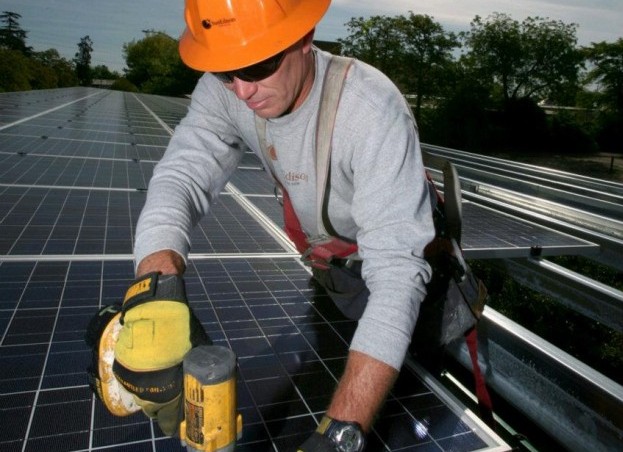
The fourth quarter of Ofgem’s revised feed-in tariff regime has kicked off with significant unutilised capacity carried over, with standard degressions being applied across more common deployment bands.
The following feed-in tariff rates for generation will be applied to installations accredited between 1 October and 31 December 2016.
| Deployment band | Feed-in tariff rate |
|---|---|
| 0 – 10kWp | 4.18p/kWh |
| 10 – 50kWp | 4.39p/kWh |
| 50 – 250kWp | 2.03p/kWh |
| 250kWp – 1MWp | 1.69p/kWh |
| >1MWp | 0.57p/kWh |
| Standalone | 0.51p/kWh |
However, for the first time under the new regime since it was enacted by the government in February this year, all rooftop bands will receive higher than expected deployment caps with unutilised capacity once again carried over into T4.
The issue is particularly notable in the residential band which in August experienced its worst month so far under the new regime, despite government ministers previously backing seasonality to provide a boost.
Just 24.85MW was deployed under the 0-10kW band throughout T3 – just around 24% of total capacity under T3. As a result, T4’s deployment cap will be almost 150% larger than expected at 127.73MW.
The commercial rooftop bands will also see additional capacity added for T4, with the 10-50kW and >50kW bands granted deployment caps of 33.28MW and 19.74MW respectively.
The final deployment statistics for T3 are only likely to increase pressure on the government to intervene and recalibrate the tariffs, however the Department for Business Energy and Industrial Strategy is so far failed to comment publicly since the release of its statistics at the end of September.
Speaking to Solar Power Portal at the time of the statistical release, the Solar Trade Association's head of external affairs Leonie Greene said that deployment numbers were evidence of an “obvious problem” that requires “urgent attention”.

